- What causes mould & damp?
- Where does mould appear?
- Preventing mould & damp
- How to get rid of mould & damp
Mould can appear in our homes almost by magic, especially in the colder months. If you feel like you're fighting a losing battle with damp and mould in your home, don't fret. The causes can be surprisingly simple and are thankfully, fairly easy to remedy.
Expert Home Tips are here to help you to win the battle over mould in your property! Today we're sharing the best prevention and treatment methods to rid your home of it for good.
What causes mould & damp?
1. Moisture inside of your property
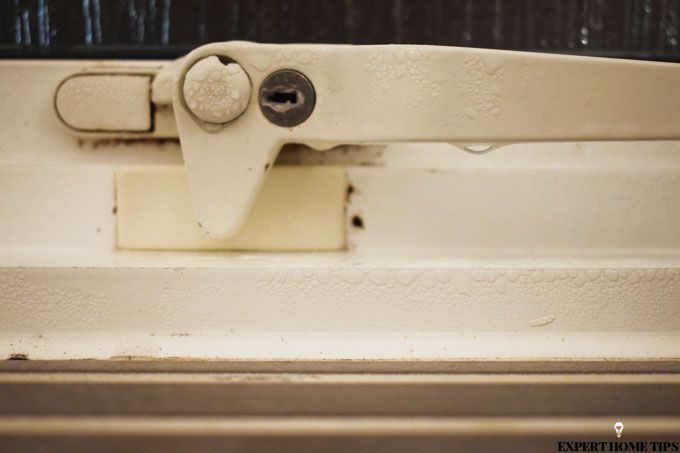
The most common cause of damp comes from moisture inside of your home. You might not realise how much water is produced from the simplest of tasks. Things like:
- Having a shower or a bath
- Cooking
- Boiling the kettle
- Using a washing machine and tumble dryer
- Air drying clothes
- Even breathing!
In the colder months, all of this excess moisture can cause a lot of problems. If you don't have the windows open or don't have proper ventilation, the moisture has nowhere to escape.
2. Your home is not effectively weatherproofed
Mould and damp on the inside of your home, on exterior walls and on chimney breasts could be a telltale sign of a weatherproofing issue. Weatherproofing problems to keep an eye out for include:
- Leaking roofs
- Damaged mortar
- Leaks from gutters
You'll most likely need to call in a professional to fix weatherproofing issues, but you might be able to clean up the inside mould and damp by yourself.
3. Issues with plumbing
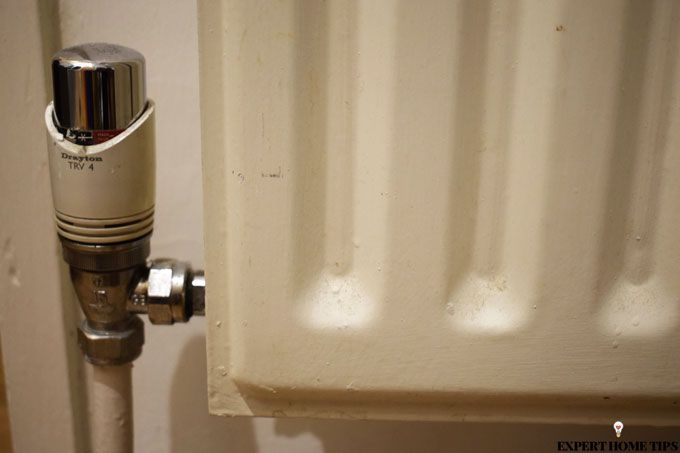
If you've got mould forming near your ceilings, radiators, and sinks, it could be a sign of a plumbing issue. These can be caused by the pipes responsible for:
- Your hot and cold water supply
- Central heating
- Wastewater
Contact a plumber if you are unable to fix the problem yourself.
4. Rising damp
In older buildings, there isn't always a foundation between the ground and the wall structures so the materials used can easily absorb moisture. This can cause rising damp. You'll know if you're dealing with rising damp because you're likely to find mould in ground floor rooms only.
Beware! A long-term fix f0r rising damp could be costly.
Where does mould appear?
Identifying where the mould and damp are in your home could help you to identify the cause of the problem.
1. Ceilings
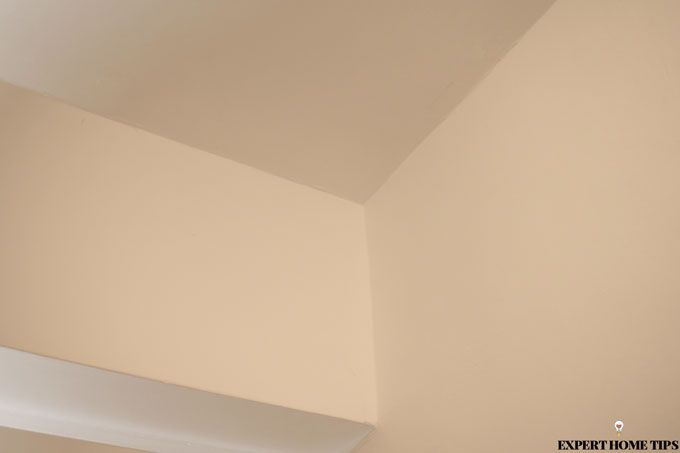
When moisture rises, it can start to form as a dark mould in the corners of your ceilings. If your ceilings are discoloured or have yellow staining, it could be a sign of a weatherproofing issue. Pay close attention to the area near the top of your chimney breast and the corners near the exterior of your home.
2. Walls
The signs of mould and damp on walls include:
- Surface feeling cold and damp
- Mould growing in dark, speckled patches
- Flaking paint and curling wallpaper
Mould and damp are able to spread across wood, wallpaper, and paint. Find out more about condensation on walls in our other article.
3. Windows

Check your windows every morning for condensation and small pools of water. You might also notice mould growing on the frames and silicone sealant as a result. If there's excessive condensation, it's a sign that your home has too much moisture trapped inside.
4. Furniture & soft furnishings
In very extreme cases, you might even find mould on furniture and soft furnishings. Blinds and curtains near windows that have been affected by damp could have signs of mould developing on them. You might even find mould on the back of your sofa if it has been placed against a damp wall.
To find out how to clean vertical blinds, check out our other guide.
5. Bathrooms & kitchens
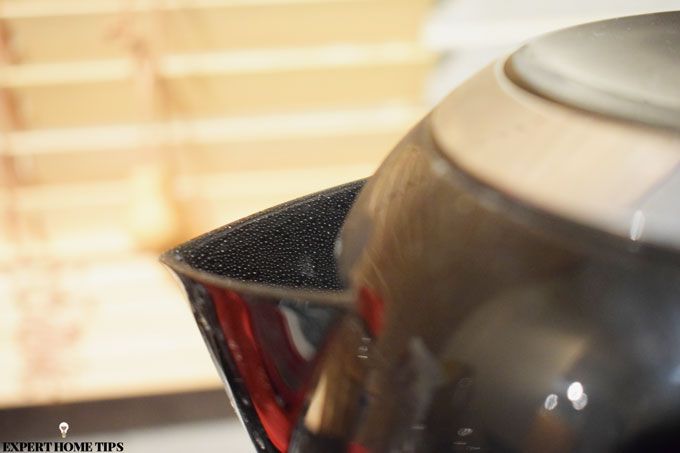
Bathrooms and kitchens are likely to be your worst offenders when it comes to mould and mildew. With excess steam and water, damp can easily cling to the walls and windows. Check your grout and sealants for signs of mould, as these can be hard to repair once it takes hold.
Preventing mould & damp
1. Ventilate the property

It might sound crazy in the winter months, but keeping your windows open wherever possible will make a big difference if your mould is caused by excess moisture inside the property.
After showering or cooking, open the window and turn on extractor fans. Close the doors to the kitchen and bathroom so that all of the excess moisture will be removed from those rooms and not spread around the rest of the house.
You'll also want to make sure that washing machines and tumble dryers are fitted with adequate ventilation.
2. Use the right paint
When decorating areas where moisture and damp are more prevalent, opt for paints that are cut out for mould and wet conditions. It's best to avoid using wallpaper in these areas as it will likely peel off or need replacing on a regular basis.
3. Remove excess moisture

It's a good idea to regularly remove as much excess water and condensation as you can. You could use a cloth to wipe moisture off of windows, shower screens, and tiles, but a Karcher window vac will be much more efficient.
4. Put the heating on a regular temperature
Are you guilty of turning the heating from one extreme to the other? It's better for your home if you leave it at a regular, mid-range temperature. Too much fluctuation will cause moisture in the air to condense.
5. Turn on fans

It might sound obvious, but it can be very easy to forget to do it. Before cooking and showering, turn on extractor fans. Make sure to leave them running for a good 10-20 minutes afterwards so that they can clear the air.
TOP TIP: Don't forget to replace the filters in your fans so they keep working properly.
6. Maintain weatherproofing
We spend most of our time inside, so it can be hard to remember to look after what's outside! Make sure to regularly check up on things like guttering and tiles to make sure that you don't end up with any leaks.
7. Use a dehumidifier
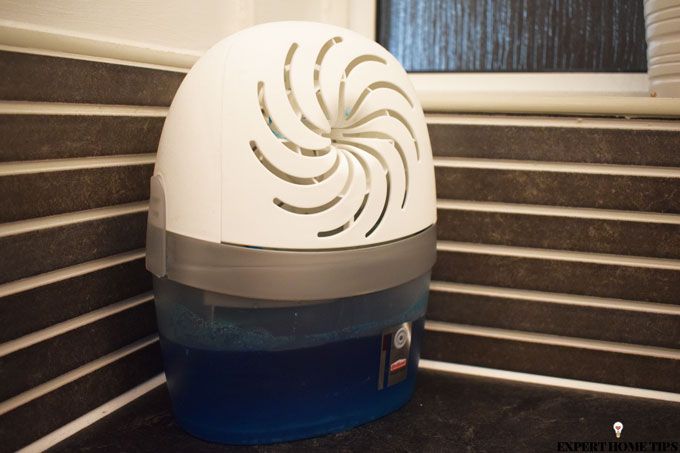
A dehumidifier could help to reduce levels of moisture in your home drastically. You can purchase electric models or ones that soak up moisture using a replaceable absorber. You'll be amazed by how much water it collects!
8. Be wary of damp laundry
You might not think it's causing damp, but even a wet towel on a radiator can wreak havoc! Try not to overload towel warmers where possible.
You should also avoid leaving washing to air dry inside for as long as the weather allows. If you do dry it inside, put it in one room with the door closed and the window open.
How to get rid of mould & damp
1. Take precautions
Before you start treating the mould, you need to think about a few safety measures:
- Wear gloves, a mask to cover your nose and mouth and eye protection.
- Wear old clothing - mould removing products are likely to damage fabrics.
- Always follow the guidelines on the packaging of any products you're using.
- Never try to remove mould that is larger than 1 metre square in size. Call in professionals to advise you.
- Keep your home well ventilated at all times.
- If the mould and damp are caused by sewage or contaminated water, don't attempt to clean it up yourself.
2. Identify and fix the root problem
Treating mould won't be worth it unless you know how to stop it from coming back. You may need help from a professional to fix whatever the problem is, or it could be as simple as making sure you leave your windows open more often.
If you're experiencing damp, you might also notice the presence of silverfish. This is an indicator that you have an underlying damp problem, as they are attracted to moist conditions.
3. Treat the mould

Spray a mould removing spray onto the surface you want to treat. Carry out a spot test in an inconspicuous area first, as these types of cleaners can damage some surfaces. Use an old cloth to wipe the solution off, following the instructions that are given on your particular product.
4. Redecorate
Now that you know the problem won't persist, you should be safe to redecorate any spots that have been affected. If painting, it's worth applying a coat of a mould resistant paint and then going over the top of that with your chosen colour.
5. Redo sealants
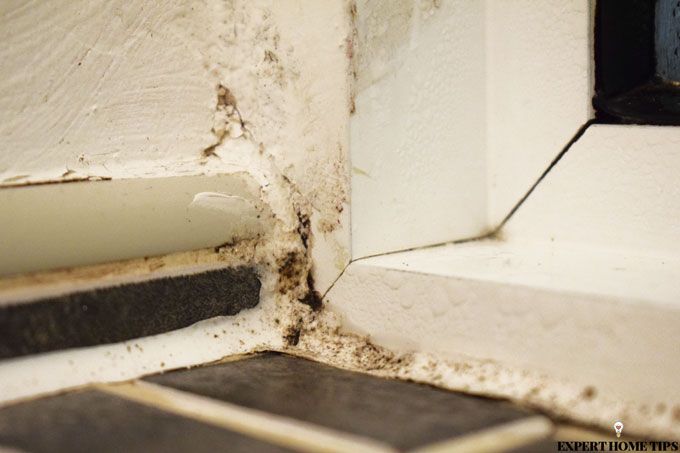
Sealants aren't the best at resisting mould, so you'll likely have to redo them. Allow the sealant to dry and then use a knife blade to cut away the silicon. Apply some fresh sealant and allow to dry before you let the surface become wet again.
For more advice, read our complete guide on removing black mould.
Now that you've sorted the mould and damp, let's tackle bathroom odours. Read our article on shower onions to find out about this strange phenomenon.
Do you know any other tips and tricks for getting rid of mould? Leave us a comment below!
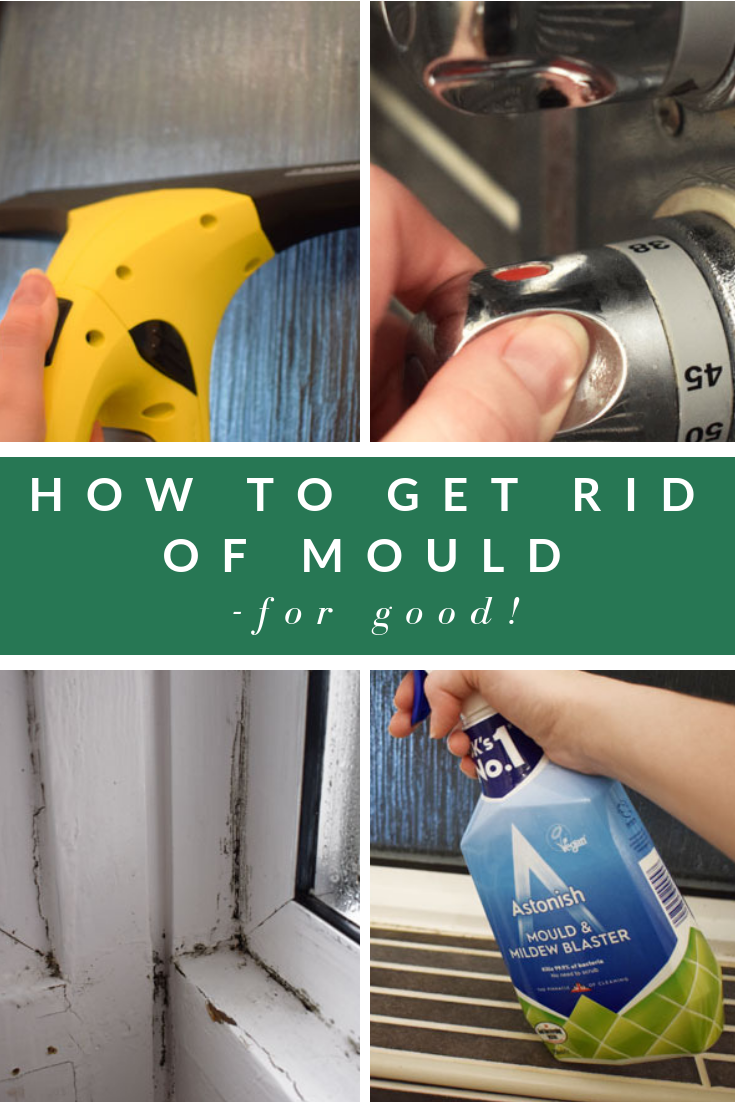
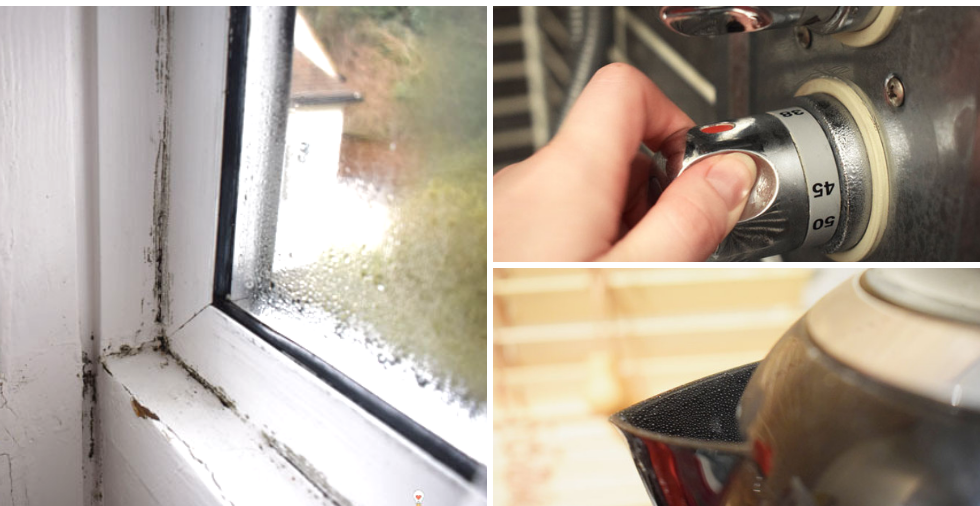
I'm sorry but all that info is useless to me. We've been living with damp and mould for years. We've tried everything out there to try and treat and beat the problem, and so far found nothing that actually works. People say the same as you, keep your heating on. But what about the people who can't afford to do that? Millions live below the breadline, yet no-one helps them with it. What can they do when nothing works?
Sorry to hear that, Mailea. Unfortunately keeping mould at bay can be a very costly task. It's a shame that so many people have to live with it, as it can be really bad for your health. If you rent or live in a council house it would be advisable to contact whoever owns the property to see if they can resolve the issue. It should be their legal duty to keep the property safe for you to live in.
I only heat one room due to cost and the two bedrooms upstairs no heat I have no mould because I keep the bedroom windows open all day even in winter slightly to keep airflow and then shut at bight and I leave my clothes horse for drying upstairs yes it takes time to dry and thus have to be organised
Sounds like you've got a great system going on, Caroline! Drying clothes is a real pain in the winter, isn't it?
There is an interesting article from a recent issue of 'What The Doctors Don't Tell You' about the effects of mould on your health. I gave a photocopy to friends who have a severe mould problem. They are using it as leverage to try and get their landlord to sort it out. They cannot use one bedroom as the problem is so bad. leaving the heating on is not an option.
White vinegar works well to keep mould at bay. Apply undiluted on to affected areas as soon as you see it appearing and you'll keep the place free from unsightly mould. The smell of vinegar fades away fairly quickly too.
Great tip! Thanks Denise.
This makes me laugh.....there isn't a product on this planet which will banish mould forever! It's an on going maintenance job all year round. Don't Gill people with false hope.
Hi there, Jonty! We're clear in the article that the only way to properly get rid of mould is to get rid of the cause of mould and damp. We've given tips and advice for how to keep up with this kind of year-round maintenance.
To get fid of mould round Windows and Walls, paint with neat bleach, making sure it only go's on the effective areas as it will take the colour out of carpets and clothes and wear gloves.
Thanks for sharing, John!
Try Domestos gel use brush to put .leave it for half an hour and clean it .On all tiles window sills etc Bingo.
Thanks for sharing! Some would avoid bleach as it can feed mould.
I had a damp patch and was told to wipe it with bleach and it definitely works on the silicone round windows, I also bought an additive which I put in the paint
Be careful, as bleach can discolour the silicone and may cause it to deteriorate over time.
When replacing sealants, purchase anti-mould products, they are well worth the increased cost.
Definitely! Thanks for sharing, James!
I use bleach diluted to wash walls down and it works
Thanks for sharing, Barbara! Does it grow back?
My house is so damp the next door neighbours don’t look after their house so I’m getting damp from both sides. I use the little dehumidifier which is the chalk crystals the the amount of water the collect are unbelievable. I also use the ones you can hand in the wardrobe I have them all over the house. I also have a large dehumidifier in the bathroom for when we have showers and bath. My windowsills were covered in mould so how I cleaned them was with bleach and a toothbrush. Time consuming but they are gleaming ....
It's important to keep on top of it! Shame about your neighbours.
Cotton wool stretched into “sausages” and soaked in bleach then packed along windows on top of the sealant works well. You need to leave it overnight and then wash away with warm soapy cloth. Make sure you wear gloves and that the area is well ventilated!
Fantastic idea - thanks, Tracey!
Get a dehumidifier so cheap to run about 180 watts you will be surprised how much water you collect in a day this way you can keep the windows shut keep the warm in ,
Dehumidifiers are a game changer!